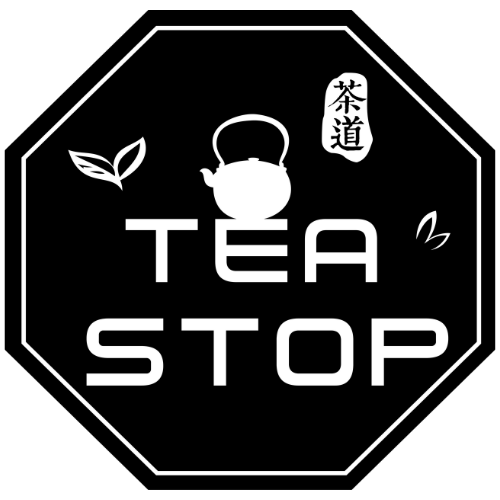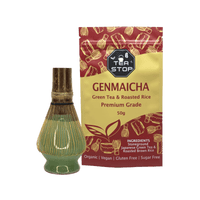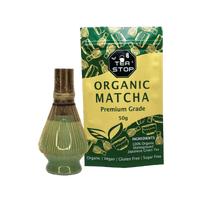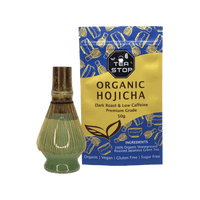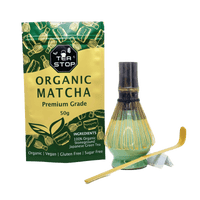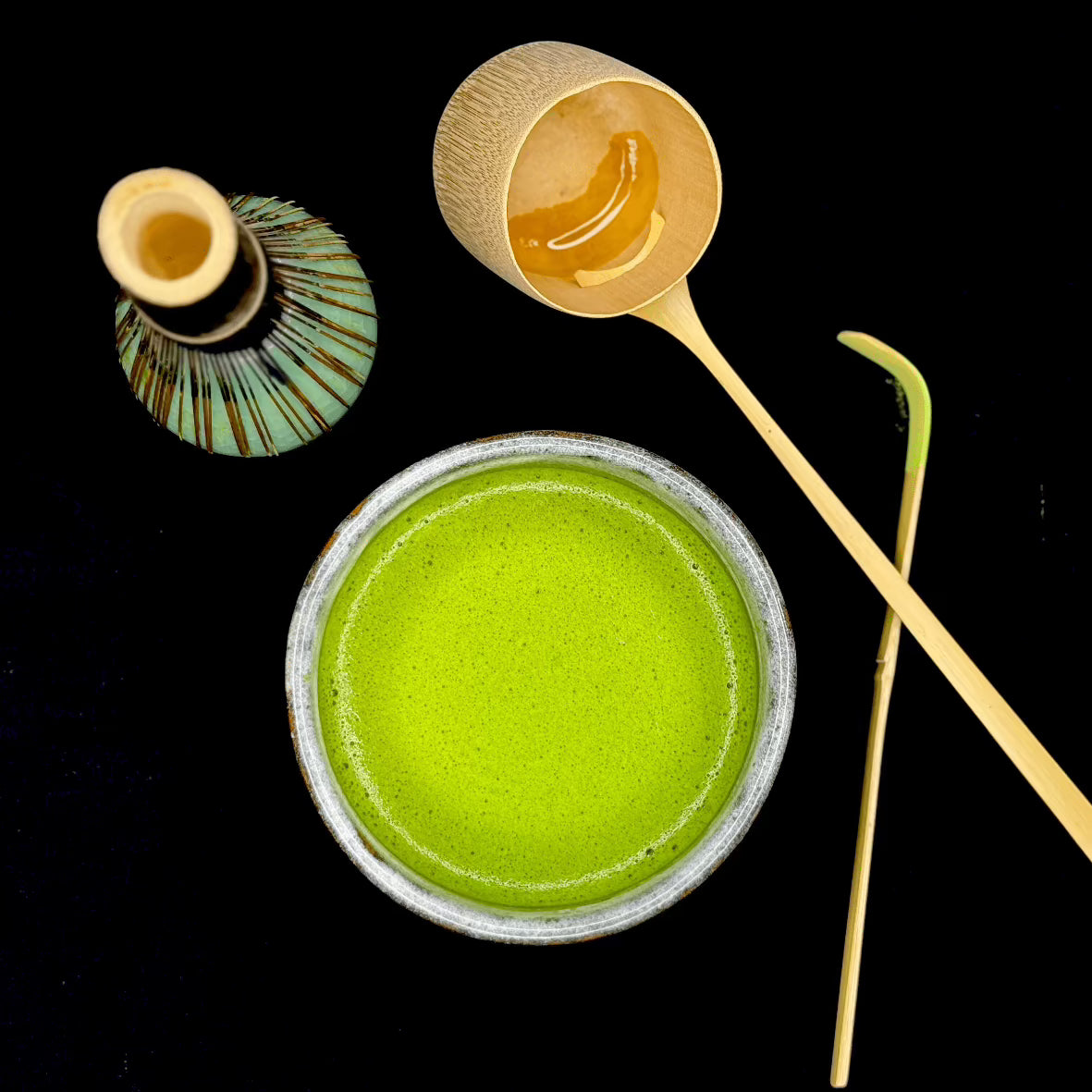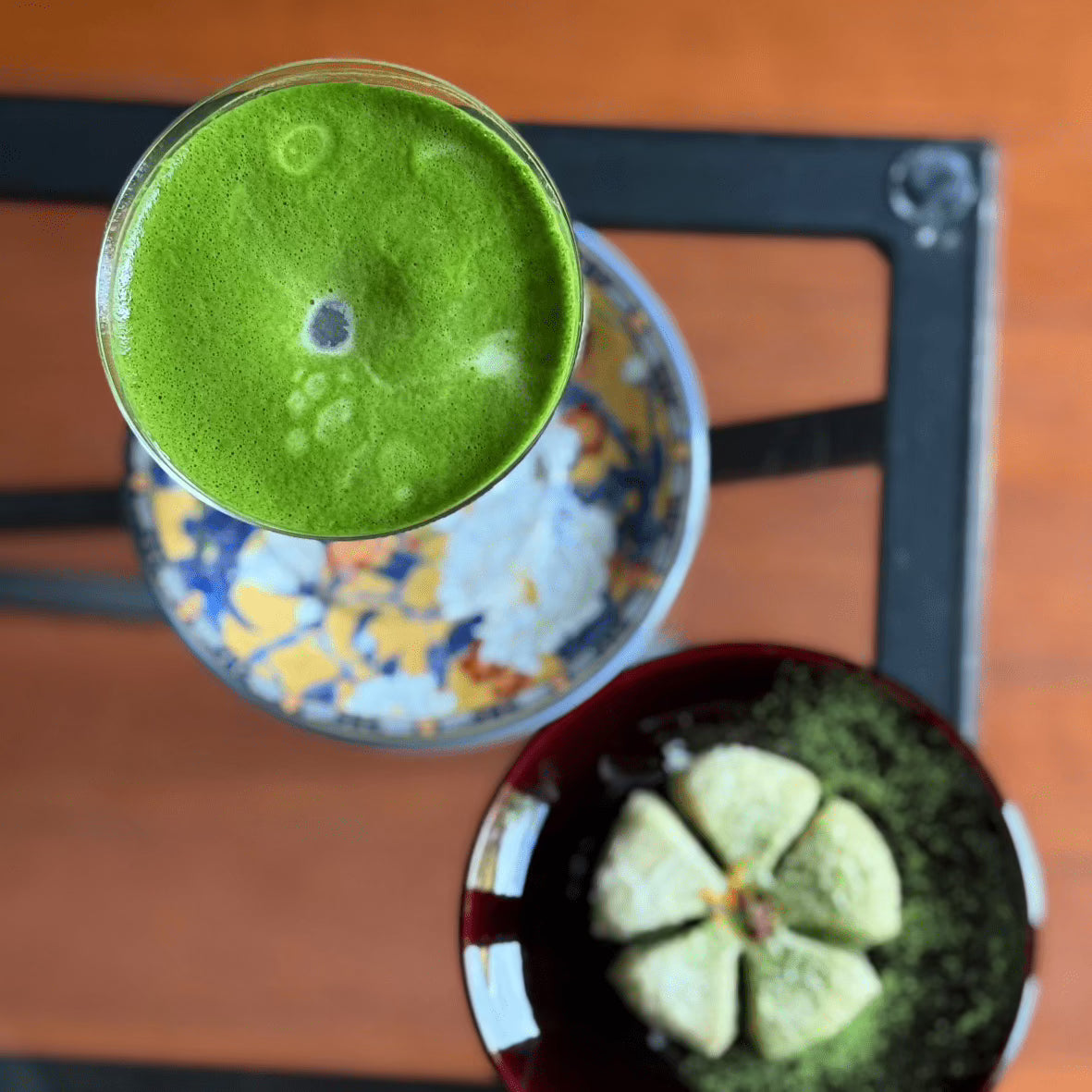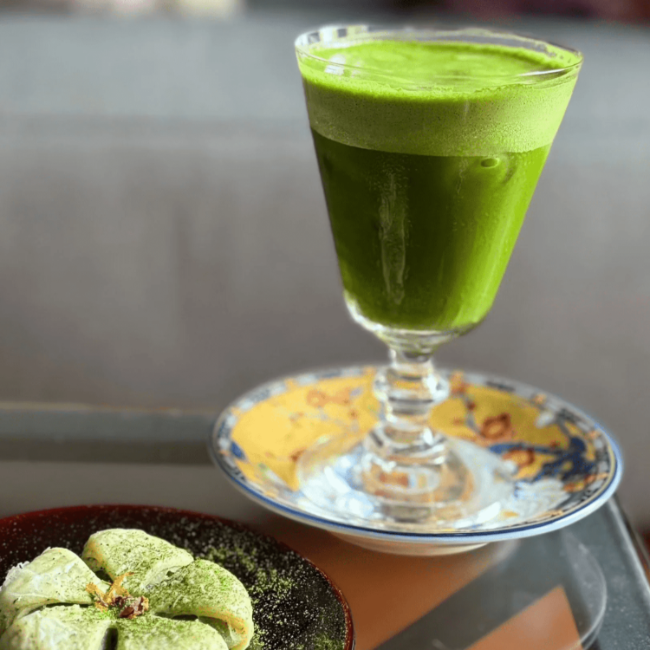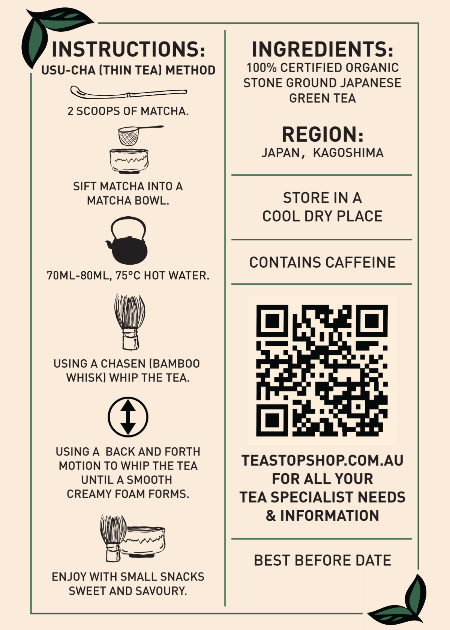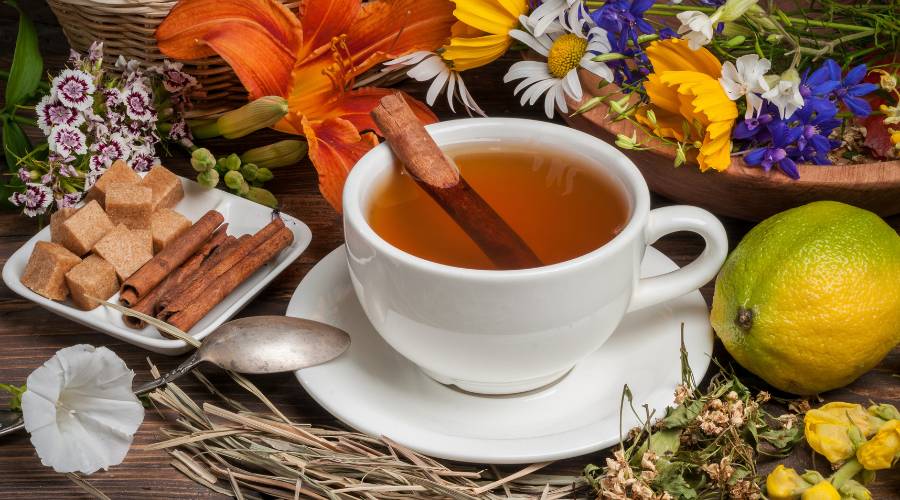
The Perfect Tea Pairing: Matching Organic Teas with Complementary Foods for Enhanced Experience
Share
Tea pairing is an art form that aligns the distinct flavors of teas with complementary foods to create a harmonious and memorable dining experience. Just as wine pairing has long been cherished for its ability to enhance the flavors of a meal, tea-drinking enthusiasts are discovering the unique benefits of matching teas with their favorite dishes.
The importance of tea pairing lies in its capacity to balance and elevate the taste profiles of both the beverage and the food. By thoughtfully selecting teas from a diverse range, such as those offered by suppliers like Tea Stop Shop Australia, which includes organic options, one can unlock new dimensions of flavor and enjoyment in every bite and sip.
The benefits of tea pairing extend beyond mere taste enhancement:
- Enhanced Experience: Elevates ordinary meals into extraordinary culinary adventures.
- Flavor Balance: Achieves a seamless blend between food and tea, accentuating subtle notes.
- Culinary Exploration: Encourages exploration of diverse organic teas, which could be paired with various teaware or enjoyed using specific accessories.
Embarking on a journey of tea pairing transforms not just your meals but also your appreciation for the rich world of tea. Whether it's through trying out different sets or exploring unique flavors, each step opens up new avenues for culinary creativity and enjoyment.

Understanding the Fundamentals of Tea Pairing
Tea pairing is similar to wine pairing, as both focus on creating a harmonious combination of beverage and food. Each type of tea has its distinct flavor profile that can either enhance or contrast with the flavors of a dish. The key here is flavor balance; the goal is to either complement or pleasantly contrast the tastes between the tea and the food.
Understanding Flavor Profiles:
- Black Tea: Known for its robust and malty flavors, black tea pairs well with hearty foods.
- Green Tea: With its grassy and fresh notes, green tea complements lighter dishes.
- Oolong Tea: This semi-fermented tea offers a diverse spectrum from floral to woody, allowing versatile pairings.
- White Tea: Delicate and slightly sweet, ideal for subtly flavored foods.
Achieving a balance between food and tea flavors involves considering both the intensity and characteristics of each component. For instance, a rich chocolate dessert might be beautifully accompanied by a bold black tea with vanilla undertones. Similarly, a delicate seafood dish might pair best with a light green tea like Dragon Well.
When exploring tea types for food compatibility, consider factors such as acidity, sweetness, bitterness, and aroma. By aligning these elements thoughtfully, you can transform a meal into an extraordinary dining experience, where each sip enhances every bite.
Tea Pairing Suggestions for Every Meal of the Day
1. Breakfast Teas and Complementary Foods
Starting the day with the right tea can enhance your breakfast experience, offering both a delightful taste and an invigorating start to your morning routine. Different breakfast options call for distinct tea pairings that complement their flavors.
Hearty Breakfast Options
For those who enjoy a robust breakfast, such as eggs and bacon, Assam and Darjeeling teas are excellent choices. These black teas have a bold flavor profile that stands up well to the richness of hearty meals.
- Assam Tea: Known for its strong, malty flavor, Assam pairs beautifully with savory dishes. Its full-bodied nature complements the umami of bacon and eggs, creating a harmonious balance.
- Darjeeling Tea: Often referred to as the "Champagne of Teas," Darjeeling offers a lighter, more floral taste than Assam. It pairs well with poached eggs or an omelet, enhancing the subtle flavors of the dish.
Light Breakfast Choices
If you prefer lighter breakfast fare, consider pairing it with a gentle green tea like Sencha. This Japanese green tea is celebrated for its grassy notes and refreshing qualities.
- Sencha (Green Tea): Ideal for pairing with light breakfasts such as yogurt topped with fresh fruits or granola. Sencha's clean taste highlights the natural sweetness of fruits while providing a refreshing contrast to creamy yogurt.
Incorporating these thoughtful pairings into your breakfast routine not only elevates your dining experience but also showcases the versatility of organic teas. Exploring different combinations allows you to appreciate how each tea's unique characteristics can transform everyday meals into memorable culinary moments.
2. Lunch Teas and Complementary Foods
Lunch provides an opportunity to explore diverse tea pairings that can elevate your midday meal. Oolong tea stands out as an excellent choice for pairing with refreshing salads, especially those featuring citrus dressings. The light, floral aroma and slightly sweet taste of Oolong create a harmonious balance with the tanginess of citrus, enhancing the overall flavor profile and providing a refreshing tea-drinking experience.
For those who prefer heartier lunch options, Ceylon tea offers a robust companion to sandwiches. Whether you're enjoying a classic turkey club or a gourmet grilled cheese, Ceylon's bold flavor can complement the savory notes of meats and cheeses, creating a rich and satisfying combination. Its brisk character cuts through richer flavors, providing a clean finish to each bite.
These lunch tea pairings demonstrate how specific teas can enhance your dining experience by complementing various dishes. Incorporating these suggestions into your routine may not only elevate your meal but also introduce you to the art of tea pairing — making lunchtime something to look forward to every day.
3. Dinner Teas and Complementary Foods
Exploring tea pairing at dinner opens a world of unique flavor experiences. As we delve into specific tea pairings for breakfast, lunch, dinner, and dessert, the focus turns to enhancing the evening meal with the perfect tea-drinking companion.
Meat Dishes:
For those savoring grilled meats, smoky Lapsang Souchong tea offers a robust partnership. Known for its distinctive smoky aroma, this black tea complements the rich flavors of barbecued or roasted meats. Its bold character not only enhances the meat's natural taste but also adds depth to the entire dining experience.
Seafood Dishes:
When it comes to seafood, Dragon Well (Longjing) green tea provides a delicate balance. This light green tea is renowned for its sweet, mellow flavor and subtle chestnut notes. It pairs beautifully with seafood dishes, highlighting and enhancing their delicate flavors without overwhelming them. The combination creates a harmonious symphony on the palate, perfect for those who appreciate refined tastes.
These thoughtful pairings demonstrate how selecting the right dinner teas can transform an ordinary meal into an extraordinary culinary journey. Each sip brings out new dimensions in your meal's flavors, making dinner not just about nourishment but a feast for the senses.
4. Dessert Teas and Complementary Foods
Rich Desserts
The decadent allure of chocolate desserts finds a perfect partner in bold black teas with vanilla notes. The rich, robust flavors of black teas such as Assam or Keemun can complement the deep cocoa notes in chocolate cakes or brownies. These teas provide a satisfying counterbalance, enhancing the overall tea-drinking experience and bringing out subtle nuances in both the tea and dessert.
Fruit-Based Desserts
For those who prefer the lighter touch of fruit-based desserts, Jasmine tea, renowned for its floral fragrance, offers an exquisite pairing. This delicate tea elevates the natural sweetness of desserts like fruit tarts or berry compotes. The floral undertones of Jasmine tea harmonize beautifully with the fresh flavors of fruits, creating an enchanting symphony for your palate.
Incorporating these pairings into your routine can transform ordinary meals into extraordinary experiences. Just as breakfast teas, lunch teas, and dinner teas have their place, dessert teas round off any meal with grace and sophistication. Experimenting with these combinations can lead to delightful discoveries that enhance every aspect of your dining journey.

Exploring Herbal Tea Pairings for Digestive Aid and Refreshment
Herbal teas offer a unique way to enhance not only flavor but also wellness. They often serve as the perfect ending to a meal or a refreshing accompaniment to light snacks. Chamomile tea is particularly renowned for its digestive benefits, making it an ideal choice after indulgent meals. Its soothing properties help ease digestion, creating a calming post-dinner ritual.
For those looking for a refreshing boost, peppermint tea is an excellent option. Known for its invigorating aroma and minty freshness, peppermint pairs wonderfully with light snacks such as cucumber sandwiches or a simple fruit platter. It cleanses the palate while providing a cooling sensation, perfect for those warm afternoons or as a midday pick-me-up.
Exploring herbal teas opens up a world of flavors and benefits, offering opportunities to create harmonious pairings that delight both the palate and the body.
The Joy of Experimentation in Tea Pairing
Trying out different tea pairings is like going on a fun food adventure. It opens up a world of creative possibilities. When we encourage ourselves to explore various combinations, we often stumble upon delightful surprises that make our dining experiences even better. The secret here is simple: we should fully embrace this process and find joy in discovering new flavors.
Why Experiment with Tea Pairing?
- Endless Variety: There are countless types of teas available, each with its unique taste profile. This means there are endless possibilities when it comes to pairing them with food.
- Personal Preference: Everyone has different tastes and preferences. By experimenting with tea pairings, you can discover what combinations work best for you and your guests.
- Creative Expression: Food and drink pairings are an art form in themselves. Experimenting allows you to express your creativity and create memorable dining experiences.
Examples of Unique Tea Pairings
Here are a couple of examples to inspire your experimentation:
- Pairing earthy Pu-erh with rich mushroom risotto creates a depth that complements both elements beautifully.
- Blending the refreshing zest of fresh mint with the floral notes of Darjeeling adds an unexpected twist that invigorates the senses.
These pairings not only enhance meals but also bring an element of playfulness to the table. They challenge traditional notions of what tea can be and encourage us to think outside the box.
"The only way to discover the limits of the possible is to go beyond them into the impossible." - Arthur C. Clarke
Redefining Tea's Role in Your Culinary Repertoire
This journey into flavor exploration invites you to redefine what tea can bring to your culinary repertoire. Instead of viewing it as just a beverage, consider how it can elevate your dishes or provide unique flavor experiences.
Remember, there are no strict rules when it comes to pairing food and tea. Trust your instincts, be open-minded, and don't be afraid to experiment!
Conclusion
Tea pairing is a great way to enhance your culinary experience, turning regular meals into something special. By carefully selecting organic teas that go well with your food, you can discover new flavors and aromas that will delight your senses.
Exploring different types of organic teas, like those offered by Tea Stop Shop Australia, gives you the chance to taste a variety of flavors and qualities. This not only makes your meals more enjoyable but also introduces you to the world of artisanal tea craftsmanship. It's a reminder to appreciate every moment and turn ordinary pleasures into unforgettable experiences.
Whether you're an experienced tea lover or just starting, learning about tea pairing opens up a world of possibilities. You'll be amazed at how a perfectly chosen tea can elevate your meal, and you'll have the freedom to explore different tastes without any limitations.
FAQs (Frequently Asked Questions)
What is tea pairing and why is it important?
Tea pairing refers to the practice of matching different types of tea with specific foods to enhance the overall dining experience. It is important because the right tea can complement flavors in food, creating a harmonious balance that elevates both the meal and the tea.
How do I achieve flavor balance when pairing tea with food?
To achieve flavor balance, consider the flavor profiles of different teas and how they interact with various foods. For instance, strong black teas may pair well with hearty dishes, while light green teas can complement delicate flavors in salads or seafood.
Can you suggest some breakfast teas and their complementary foods?
For hearty breakfast options, Assam and Darjeeling teas pair well with eggs and bacon. For lighter choices, Sencha (green tea) complements yogurt with fruits beautifully.
What are some recommended lunch teas and their pairings?
Oolong tea is a great choice for refreshing salads, especially those with citrus dressings. Ceylon tea pairs nicely with hearty sandwiches, enhancing their flavors.
What types of teas are best for dinner and dessert?
For dinner, smoky Lapsang Souchong goes well with grilled meats, while Dragon Well (light green tea) pairs wonderfully with seafood dishes. For dessert, bold black teas with vanilla notes complement chocolate cakes, while Jasmine (floral tea) enhances the sweetness of fruit-based desserts.
How can I experiment with tea pairings?
Experimentation is encouraged in tea pairing! Try combining unique flavors such as fresh mint with Darjeeling or other creative combinations. The joy of exploration can lead to delightful culinary adventures.
